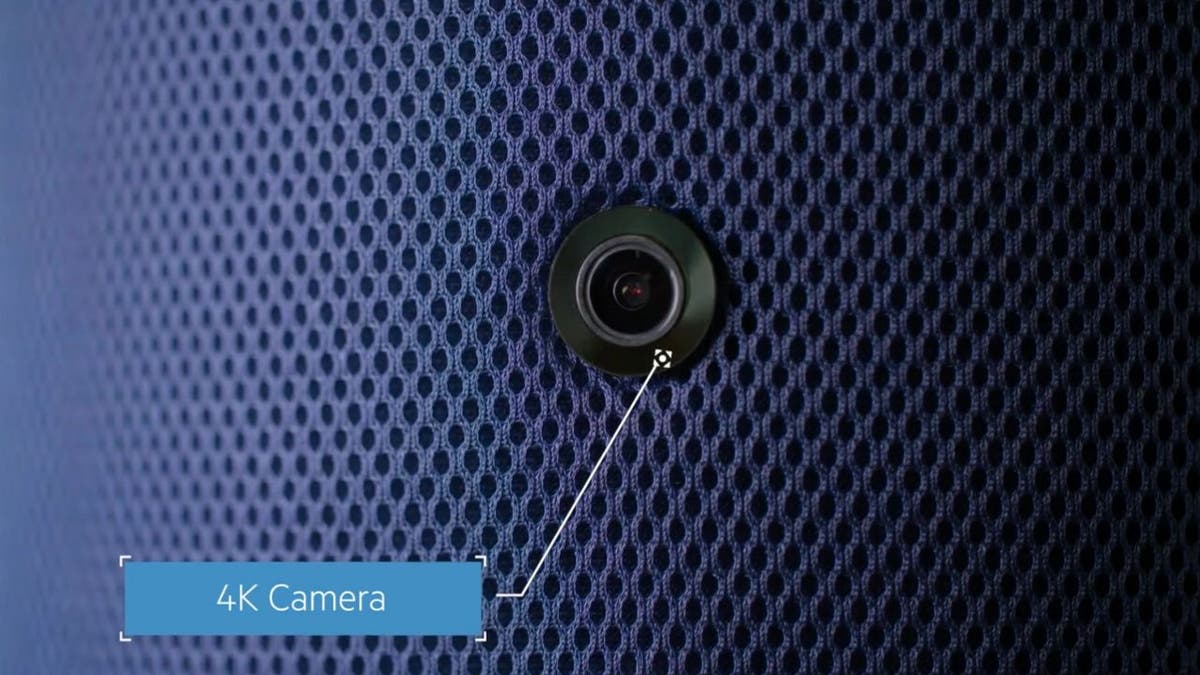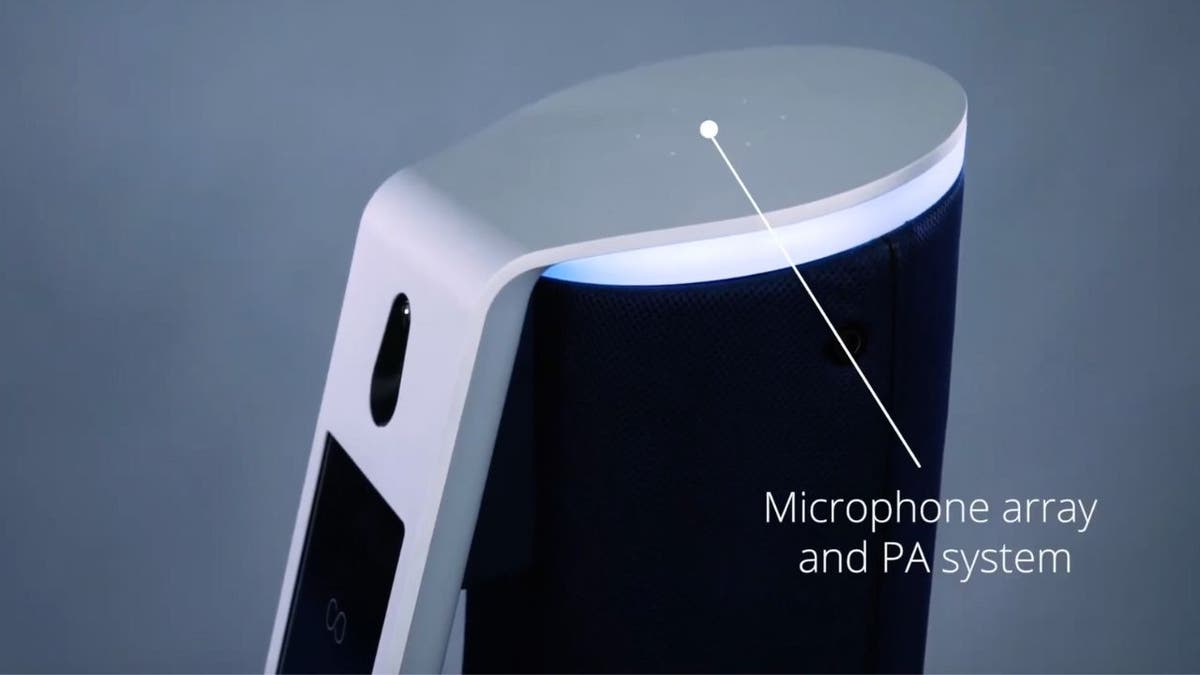Technology
Is this autonomous security guard robot the protection you need?

They’re not your typical office workers. Standing at 5 feet tall and cruising through the corridors at a leisurely 3 mph, these robotic guards are the latest addition to workplace security.
Gone are the days of the traditional security guard. Now, robots are taking over the night shift and beyond.
How do these security robots work?
Cobalt’s robots are custom-built to navigate the unique challenges of each building, from ramps to elevators. They patrol the hallways, vigilant for signs of trouble – be it an unusual motion after hours or a door left ajar – and report their findings to a human-staffed call center.
CLICK TO GET KURT’S FREE CYBERGUY NEWSLETTER WITH SECURITY ALERTS, QUICK VIDEO TIPS, TECH REVIEWS AND EASY HOW-TO’S TO MAKE YOU SMARTER
These robots can even spot things that might escape the watchful eye of a security camera. They can do this because they are equipped with a depth camera, heat-detecting thermal sensors, 4K cameras that can see 360 degrees, Lidar, as well as a Microphone array for listening and PA system for announcing.

Interactivity and assistance of the security robot
With a simple tap on the screen, employees can summon a 24/7 specialist to address concerns ranging from spills, unwelcome visitors or suspicious activity. This seamless integration of technology and human oversight lets real-life guards spend more time responding and less time observing now that Cobalt is carefully watching on patrol and reporting back what it detects.
WHAT IS ARTIFICIAL INTELLIGENCE (AI)?

MORE: ELECTRIC HUMANOID ROBOT TO SHAKE UP THE JOB MARKET
Case study: DoorDash
DoorDash has embraced Cobalt’s robotic guards across its corporate sites. The result? Enhanced security operations with fewer sick days, no HR complaints, and a boost in both accuracy and response times for security and safety-related incidents.

MORE: THE SHAPE-SHIFTING UNDERWATER ROBOT PIONEERING THE DEPTHS OF THE SEA
Robots vs. humans: The numbers
The driving force behind this robotic revolution is money. It’s far more economical for companies to deploy robots for round-the-clock security than to rely solely on human guards. According to Forrester Research, opting for a robotic guard over a human can lead to substantial savings – around $79,000 annually. That’s a figure that’s hard to ignore for any business looking to optimize its operations.

MORE: APOLLO THE ROBOT JOINS MERCEDES-BENZ ASSEMBLY LINE PRODUCTION
The competitive landscape of the security robot
The security robot market is heating up, with competition between indoor and outdoor models. While Cobalt’s robots are indoor specialists, others like Knightscope and SMP Robots are venturing into both terrains, including malls, hotels and industrial sites. And let’s not forget drones, which are starting to make their mark in the security domain.

Challenges and considerations of security robots
Of course, it’s not all smooth sailing. Security robots have had their share of mishaps, from minor accidents to malfunctioning in critical situations. And there’s the human factor to consider. Sometimes, nothing can replace the reassurance of a human presence in times of distress.

Kurt’s key takeaways
Despite the occasional glitch, the consensus is clear: Security robots are here to stay, and their presence is set to grow as the technology continues to advance. They may not replace human guards entirely, but they’re redefining the role and allowing humans to focus on more strategic tasks.
What’s your take on these new robot guards? Do you think they’re as trustworthy as human security or are we moving too fast into a tech-driven safety zone? Let us know by writing us at Cyberguy.com/Contact.
For more of my tech tips and security alerts, subscribe to my free CyberGuy Report Newsletter by heading to Cyberguy.com/Newsletter.
Ask Kurt a question or let us know what stories you’d like us to cover.
Answers to the most asked CyberGuy questions:
Copyright 2024 CyberGuy.com. All rights reserved.

Technology
Intel says it still doesn’t have the true fix for its crashing i9 desktop chips
/cdn.vox-cdn.com/uploads/chorus_asset/file/24125942/intel_13900_2_tomwarren.jpg)
For months, Intel’s highest-end desktop gaming processors have had a strange tendency to occasionally make games crash — and despite what you might have seen earlier today, Intel says it doesn’t have a final fix for its 13th and 14th Gen Intel Core i9 “Raptor Lake” and “Raptor Lake S” chips just yet.
“Contrary to recent media reports, Intel has not confirmed root cause and is continuing, with its partners, to investigate user reports regarding instability issues on unlocked Intel Core 13th and 14th generation (K/KF/KS) desktop processors,” reads a statement via Intel spokesperson Thomas Hannaford.
It continues: “The microcode patch referenced in press reports fixes an eTVB bug discovered by Intel while investigating the instability reports. While this issue is potentially contributing to instability, it is not the root cause.”
Intel’s official statement references (and partially confirms) leaked internal Intel documents obtained by Igor’s Lab earlier today. Those documents suggest that part of the problem is how Intel’s chips have been erroneously overclocking their own cores, using a feature called Enhanced Thermal Velocity Boost (eTVB), even when they should have known they were running too hot to do that.
“Root cause is an incorrect value in a microcode algorithm associated with the eTVB feature,” that leaked document began. It continued:
Failure Analysis (FA) of 13th and 14th Generation K SKU processors indicates a shift in minimum operating voltage on affected processors resulting from cumulative exposure to elevated core voltages. Intel® analysis has determined a confirmed contributing factor for this issue is elevated voltage input to the processor due to previous BIOS settings which allow the processor to operate at turbo frequencies and voltages even while the processor is at a high temperature. Previous generations of Intel® K SKU processors were less sensitive to these type of settings due to lower default operating voltage and frequency.
Intel® requests all customers to update BIOS to microcode 0x125 or later by 7/19/2024.
This microcode includes an eTVB fix for an issue which may allow the processor to enter a higher performance state even when the processor temperature has exceeded eTVB thresholds.
But while Intel confirms eTVB was potentially part of the problem, it’s apparently not the “root cause” of the whole issue.
Here’s hoping we get a full fix soon.
Technology
Apple and Meta could face charges for violating EU tech rules
/cdn.vox-cdn.com/uploads/chorus_asset/file/25336519/STK450_EU_G.jpg)
The Commission is reported to be targeting Apple over its “steering” rules that charge developers for pointing to third-party purchase options. Meta’s charges will reportedly revolve around its ad-free subscription for Facebook and Instagram in the EU.
The Commission will be issuing preliminary findings, according to Reuters, meaning that the companies can make changes to try and correct things before the Commission makes a final decision. Apple is set to be charged first, Reuters reports, and the FT says we could see the charges in the coming weeks.
The European Commission and Apple didn’t reply to a request for comment. Meta declined to comment.
The charges follow the Commission opening DMA non-compliance investigations into Apple, Meta, and Alphabet in March. The DMA, which designates Alphabet, Amazon, Apple, TikTok owner ByteDance, Meta, and Microsoft as “gatekeepers” that must comply with rules over certain “core platform services” they offer, went into effect earlier that month.
Technology
Apple and OpenAI make a deal
/cdn.vox-cdn.com/uploads/chorus_asset/file/25491220/VST_0614_Site.jpg)
So, Apple reportedly isn’t paying OpenAI to handle its users’ ChatGPT queries, and OpenAI isn’t paying Apple for its massive distribution. (A billion pockets, y’all!) If that’s the case, what do these two companies get out of their blockbuster partnership for all things iOS and AI? And can OpenAI and Apple actually afford to do this, economically and reputationally? It’s a strange pairing, but it’s coming to a device near you this fall.
If you want to know more about everything we discuss in this episode, here are some links to get you started, first on WWDC:
And on all the week’s new gadgets:
And in the lightning round:
-

 News1 week ago
News1 week agoWoman handcuffed in police car hit by freight train reaches $8.5M settlement
-

 World1 week ago
World1 week agoEconomy, migration: Voters' main concerns ahead of elections
-

 Politics1 week ago
Politics1 week agoTrump campaign accelerates vetting of potential running mates
-

 Politics1 week ago
Politics1 week ago'It's absurd': Congress takes bipartisan action after Cuban officials' tour secure parts of major airport
-

 Politics1 week ago
Politics1 week agoHunter Biden trial enters 3rd day with cross-examination of FBI agent
-

 News1 week ago
News1 week agoIsrael used a U.S.-made bomb in a deadly U.N. school strike in Gaza
-

 World1 week ago
World1 week agoFamine ‘likely’ already stalking northern Gaza: Report
-

 World1 week ago
World1 week agoWorld leaders, veterans mark D-Day’s 80th anniversary in France















